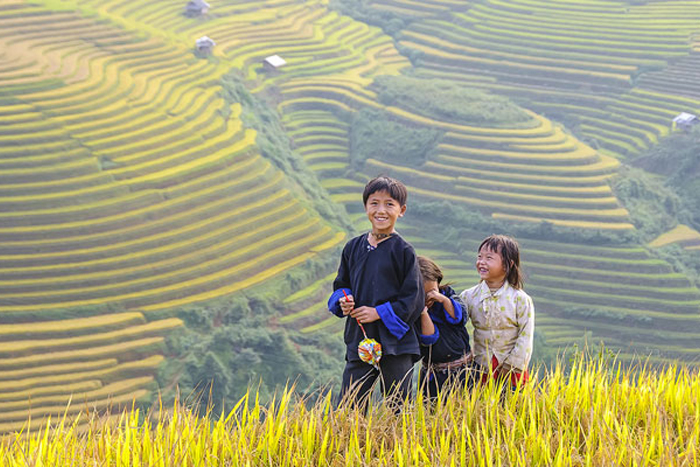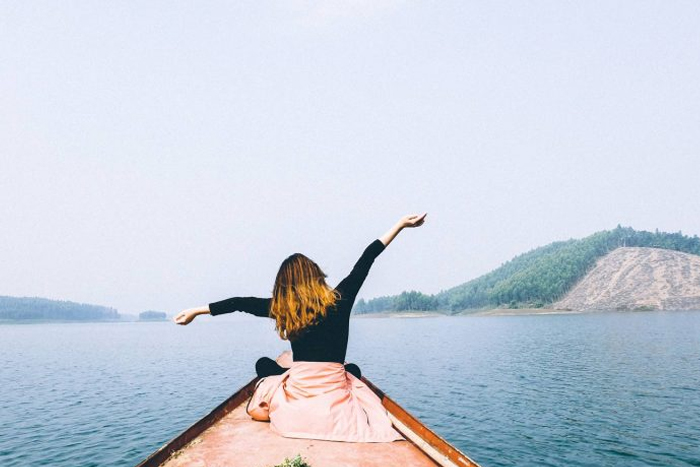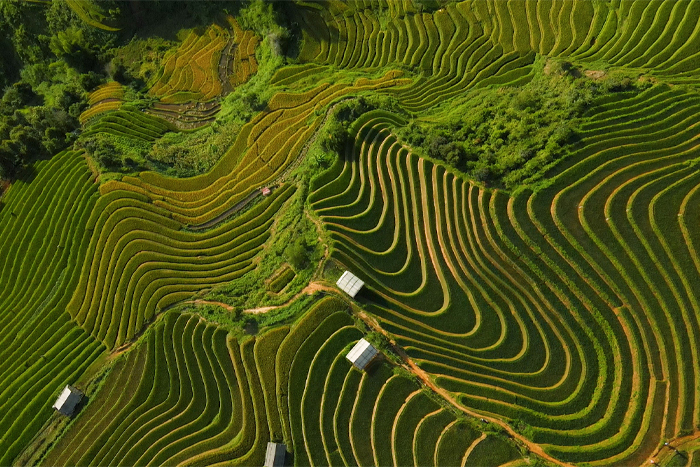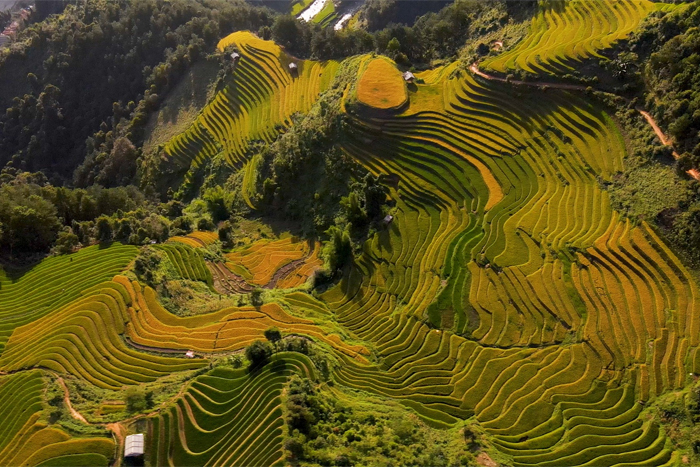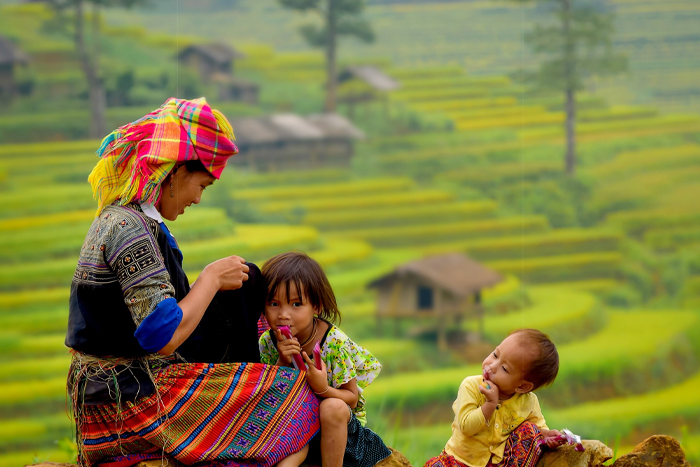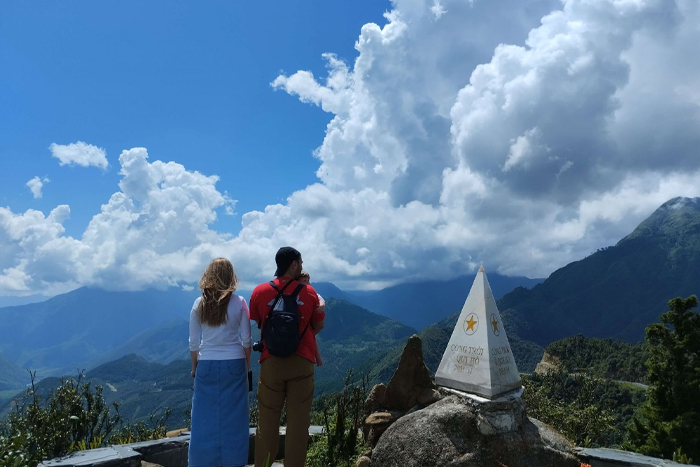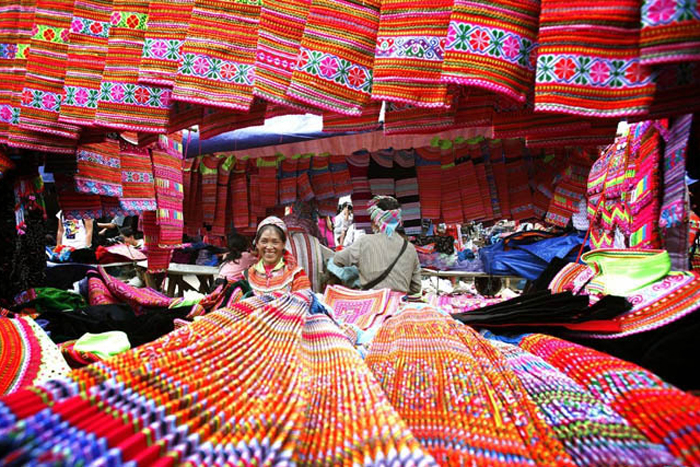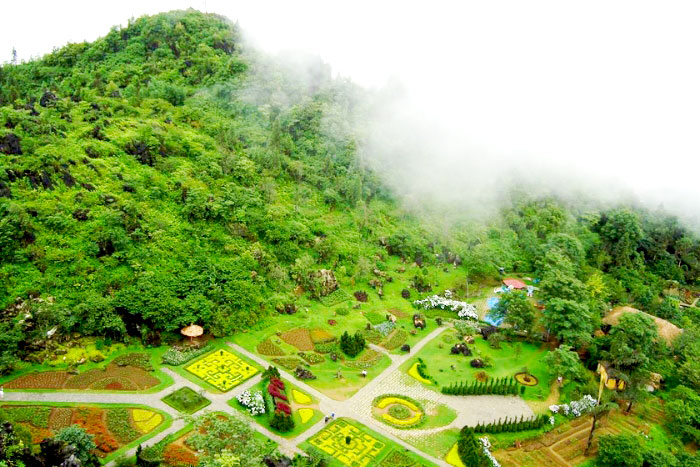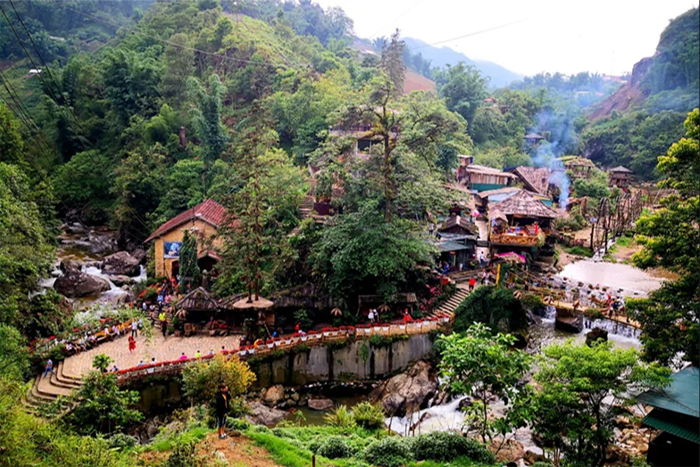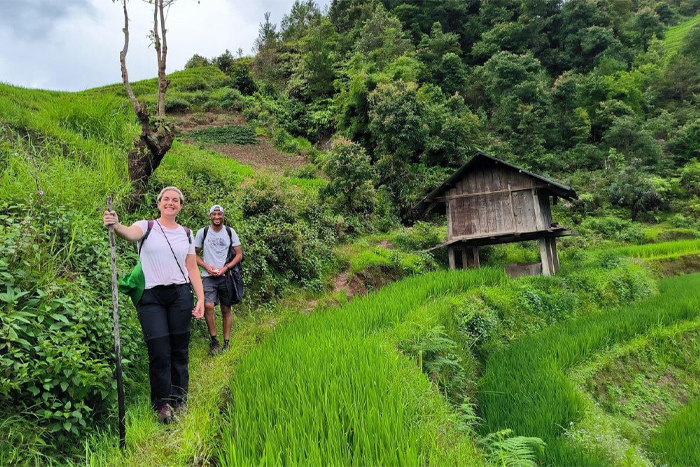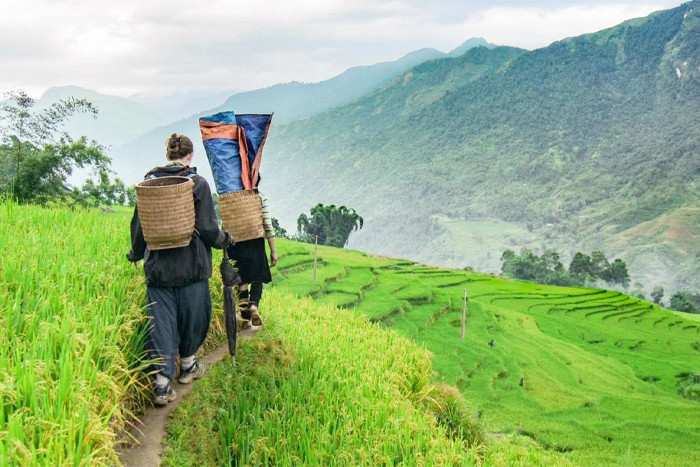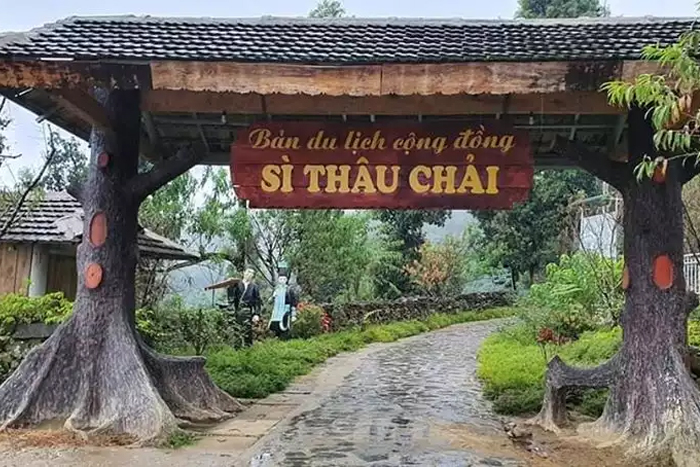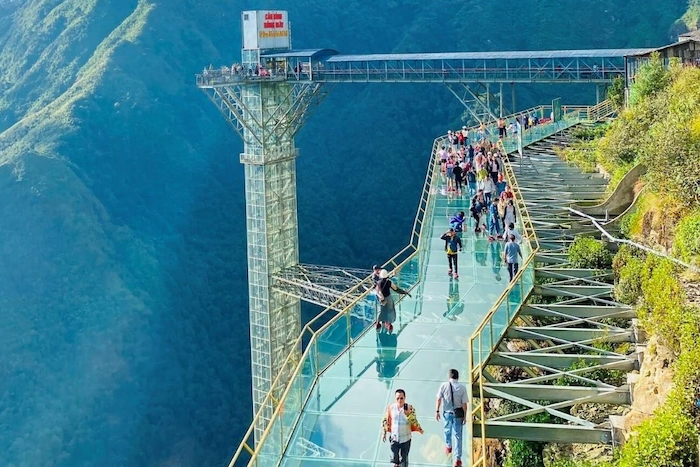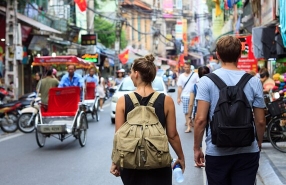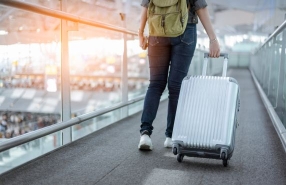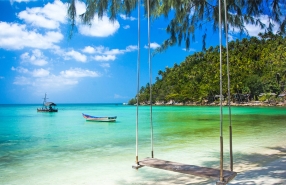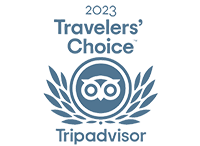Planning a 6-day itinerary in Yen Bai Lao Cai Lai Chau? You're about to experience one of the most unforgettable adventures Vietnam has to offer. This comprehensive travel guide will take you through the heart of Northwest Vietnam where the legendary rice terraces of Mu Cang Chai, the cultural richness of Sapa, and the unspoiled beauty of Lai Chau await. Whether you're a nature enthusiast, cultural explorer, or photography lover, this 6-day trip to Yen Bai Lao Cai Lai Chau delivers an authentic, immersive journey through some of the country's most breathtaking mountain landscapes. Wondering what the experience is really like? Dive into the story of our traveler, Hubert, as he shares his personal reflections below.
I. Why choose this 6-day itinerary in Yen Bai Lao Cai Lai Chau?
My name is Hubert, and I’d like to share with you one of the most unforgettable journeys I’ve ever had in Vietnam. After careful research, I decided to book a 6-day Northwest Vietnam tour with Autour Asia,
Vietnam tour agency and it truly turned out to be a fantastic decision!
The 6-day itinerary in Yen Bai Lao Cai Lai Chau I chose with Autour Asia took me through three of Vietnam’s most stunning and culturally rich provinces in the Northwest region:
Yen Bai province is home to the breathtaking Mu Cang Chai terraced fields, a UNESCO-recognized landscape that showcases centuries of agricultural artistry. These golden rice terraces represent the perfect harmony between ethnic communities and Vietnam's mountainous terrain.
Lao Cai serves as a cultural and geographical crossroads, most notably represented by the highland town of Sapa. Sapa town serves as the cultural heart of Lao Cai province, where French colonial architecture beautifully blends with vibrant ethnic diversity. This charming mountain town acts as your gateway to Mount Fansipan, Vietnam's highest peak, offering incredible trekking opportunities.
Lai Chau province remains one of Vietnam's most authentic off-the-beaten-path destinations, largely untouched by mass tourism. The province features spectacular attractions including Pu Sam Cap caves, the pristine Sin Ho Plateau, and the thrilling Rong May glass bridge. This remote region offers perfect cultural immersion opportunities for travelers seeking genuine Vietnamese mountain experiences.
Why I chose Autour Asia? Before booking the tour, I compared several travel companies. I actually discovered Autour Asia through Facebook. What impressed me most about them was:
Thoughtful and professional consultation: Their team was highly professional and answered all my questions in detail.
Flexible itinerary: The schedule could be adjusted according to my personal preferences.
Local guides: Knowledgeable English-speaking guides who truly understood the culture and history of each region.
Excellent customer support: They were available 24/7 to assist throughout the trip.
👉 If you’re looking for an authentic journey to explore Northwest Vietnam, this itinerary is definitely an amazing choice!
II. Detailed itinerary of 6 days in Yen Bai Lao Cai Lai Chau
1. Day 1: Hanoi to Mu Cang Chai (Yen Bai)
Our 6-day itinerary in Yen Bai Lao Cai Lai Chau began with an early morning departure from Hanoi at 6:00 AM. The 300-kilometer journey to Mu Cang Chai took approximately 5–6 hours, winding through increasingly dramatic mountain landscapes that served as a perfect introduction to Vietnam's northwest region. Autour Asia arranged a comfortable private vehicle for us, and our local driver was not only skillful on the mountainous roads but also shared insightful stories about the regions we passed.
The route
from Hanoi to Mu Cang Chai transformed from urban sprawl to rural countryside, then into mountainous terrain. Our first major stop was the scenic
Thac Ba Lake area, where limestone karsts emerged from emerald waters. The road gradually climbed through pine forests and traditional H'mong villages, offering glimpses of the cultural diversity we would experience throughout our 6-day itinerary.
Upon arrival in Mu Cang Chai, the sight of terraced rice fields cascading down mountainsides created an immediate wow factor. After checking into our accommodation - handpicked by Autour Asia for both comfort and authenticity, we enjoyed a traditional lunch featuring local specialties like com lam (bamboo rice) and grilled mountain pork. We then began exploring the famous La Pan Tan terraces with a local guide arranged by the agency.
The La Pan Tan terraced fields represented one of Vietnam's most photographed landscapes, and for good reason. These ancient terraces, carved by H'mong farmers over centuries, demonstrated both agricultural ingenuity and artistic beauty. A gentle afternoon walk through the terraces allowed us to appreciate the intricate irrigation system while interacting with local farmers who maintained these living masterpieces.
We positioned ourselves at designated sunset viewpoints to witness one of the highlights of any 6-day itinerary in this region. As late afternoon light bathed the terraced landscape, each water-filled terrace became a mirror reflecting the sky, creating a sea of gold that photographers dream about. Our guide helped us find the perfect photo spots and even assisted with camera settings - a thoughtful touch from Autour Asia’s service.
Afterwards, we returned to our cozy homestay for a warm dinner and well-deserved rest.
2. Day 2: Mu Cang Chai ( Yen Bai)
Day two focused entirely on the cultural and natural treasures of Mu Cang Chai, widely considered Vietnam's most spectacular terraced landscape region.
We rose before dawn for one of Southeast Asia's most magnificent sunrise experiences. Early morning mist blanketed the Mu Cang Chai valley, creating ethereal conditions as first light gradually illuminated the terraced landscape. Though professional photographers often spend weeks here waiting for perfect conditions, we were fortunate to enjoy spectacular shots during the optimal September- October season. Our local guide’s familiarity with the best angles made a big difference.
After breakfast, we embarked on a comprehensive trek through the Che Cu Nha terraced fields with a local H'mong guide, who was arranged through Autour Asia. This moderate 4-kilometer trek followed ancient stone paths used by generations of farmers, providing insights into traditional agricultural techniques and community water management systems.
Our H'mong guide shared invaluable knowledge about seasonal farming cycles, explaining how families coordinated planting and harvesting activities, and how the community managed water distribution through sophisticated traditional irrigation systems. The trek passed through authentic H'mong villages where daily life continued unchanged, allowing us to observe traditional activities like cotton spinning, indigo dyeing, and food preparation.
We experienced genuine H'mong hospitality with lunch served in a traditional family home. This culinary experience provided insight into H'mong food culture and demonstrated how mountain families maximized nutrition from limited resources.
In the afternoon, we explored the De Xu Phinh terraces, another magnificent system offering different photographic perspectives. This area was particularly famous for S-curved terraces that created natural leading lines beloved by photographers. Optional motorcycle rides (walking paths also available) took us to elevated viewpoints where the full scope of the terraced landscape became apparent. We appreciated how flexible and attentive our guide was to our interests, whether we wanted to walk or ride.
We concluded our day with a visit to Mu Cang Chai's weekly market (Saturday). This authentic gathering provided fascinating insight into mountain commerce, where H'mong, Thai, and other ethnic minorities traded goods, socialized, and maintained community connections. The market featured traditional textiles, local produce, handmade tools, and livestock trading areas. Our guide helped translate conversations, making the experience far more immersive.
Following the market visit, we headed back to our accommodation for a relaxing evening.
3. Day 3: Mu Cang Chai - Sapa (Lao Cai)
Day three involved a scenic transition from Yen Bai to Lao Cai Province, specifically the famous mountain town of Sapa.
After a final sunrise viewing and hearty breakfast, we departed for the 3–4 hour journey to Sapa. This route wound through some of Vietnam's most dramatic mountain scenery, including several passes offering breathtaking panoramic views of the Hoang Lien Son range, locally known as the "Roof of Indochina."
The drive passed through traditional villages of various ethnic minorities, each identifiable by distinct architectural styles and agricultural practices. Strategic stops included the famous Heaven's Gate pass, where clear weather provided stunning views of Mount Fansipan, Vietnam's highest peak at 3,147 meters. Thanks to our guide's keen eye, we stopped at lesser-known viewpoints that most tourists miss.
Arrival in Sapa revealed the unique character of this former French hill station, evident in its architecture, climate, and cultural atmosphere. After lunch and hotel check-in, once again perfectly arranged by Autour Asia, we began a walking tour including the characteristic stone church, bustling central market, and viewpoints overlooking the famous Muong Hoa Valley.
The Sapa market represented one of Vietnam's most colorful ethnic markets, where H'mong, Red Dao, Tay, Giay, and Xa Pho people gathered to trade and socialize. The textile section showcased intricate traditional embroidery and handwoven fabrics requiring months to complete. Our guide’s background knowledge added so much meaning to every detail we observed.
Ham Rong mountain experience (4:00 PM - 6:00 PM): We visited
Ham Rong (Dragon's Jaw) Mountain, accessible via a short but steep climb from the town center. This location provided spectacular panoramic views of Sapa and surrounding valleys while featuring beautifully maintained flower gardens blooming year-round. We ended the afternoon with Vietnamese coffee at a scenic mountaintop café- a quiet moment of reflection thoughtfully worked into the itinerary.
![]()
In the evening, we returned to our hotel for dinner and free time. Some of us wandered around Sapa's night market, while others stayed in to recharge for the next day’s trek.
4. Day 4: Sapa Valley Trekking
Day four represented the trekking highlight of our journey, featuring comprehensive exploration of the Muong Hoa Valley's most scenic and culturally significant villages.
Cat Cat village experience (8:00 AM - 11:00 AM): We began with a descent from Sapa town into the Muong Hoa Valley, accompanied by a Autour Asia's guide. The 12-kilometer trek started at Cat Cat Village, a H'mong settlement famous for preserving traditional crafts while adapting to sustainable tourism.
Cat Cat showcased traditional activities including cotton spinning, indigo dyeing, and blacksmith workshops where families created agricultural tools using ancestral techniques. The village's terraced fields demonstrated intensive agriculture, with families maximizing productivity from steep plots through careful water management and crop rotation.
The Cat Cat Waterfall provided both scenic beauty and practical function as a power source for traditional mills. This 60-meter cascade created dramatic photography backdrops while demonstrating how H'mong communities historically harnessed natural resources.
Sin Chai village cultural exchange (11:00 AM - 3:00 PM): We continued to Sin Chai Village, home to Red Dao people distinguished by elaborate traditional clothing featuring intricate embroidery and distinctive red headscarves. This community maintained traditional practices including herbal medicine, unique architecture, and spiritual beliefs incorporating ancestor worship and animistic traditions.![]()
Lunch in a traditional Red Dao home - another delightful arrangement by Autour Asia provided authentic mountain hospitality and education about traditional cooking methods. Red Dao cuisine incorporated numerous wild herbs and vegetables, creating flavors unavailable in urban Vietnamese cuisine. Specialties included mountain goat curry, wild vegetable soups, and locally-distilled corn wine playing important social and ceremonial roles.
Ta Van village discovery (3:00 PM - 6:00 PM): Our afternoon trek continued through Ta Van Village, home to Giay ethnic minority known for distinctive stilt houses and terraced fields demonstrating different agricultural techniques. The Giay people practiced wet rice cultivation in valley floors while maintaining dry crop terraces on hillsides, creating diverse agricultural landscapes within single communities. We then returned to our homestay in Ta Van, where we had dinner and shared stories with fellow travelers.
5. Day 5: Sapa - Lai Chau
Day five featured the spectacular journey to Vietnam's most remote northwestern province, passing through the country's highest mountain pass.
Tram Ton pass adventure (8:00 AM - 11:00 AM): We departed Sapa early for the dramatic drive to Lai Chau, beginning with the famous Tram Ton Pass - Vietnam's highest at 1,900 meters elevation. This section, known as the "Stairway to Heaven," featured numerous switchbacks providing constantly changing panoramic views. Our driver navigated these with calm confidence, and we felt safe and well cared for throughout. As we entered Lai Chau Province, we made a special detour to explore the mystical Pu Sam Cap cave system - one of the region's hidden gems. This newly developed eco-tourism site is rich in stalactites, legends, and geological formations that amazed us with their beauty and mystery. The walkways were well-maintained and the guide helped us understand local folklore tied to the cave's history.
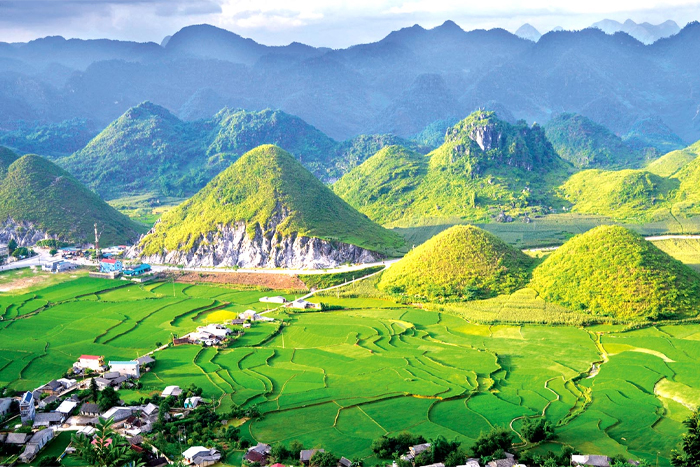
After a scenic lunch, we headed up to Sin Ho Plateau, often called "the second Sapa" - perched at an altitude of over 1,500 meters. Known for its cool climate, wild orchids, and misty landscapes, the plateau is home to several ethnic minority communities, including the Dao and Mang people. We visited a remote village, where the hospitality was warm, and the views over layered mountain valleys left us speechless.
We returned to Lai Chau city center in the late afternoon. After check-in, we had some free time to rest at our hotel or take a short stroll to view the stunning Lai Chau Provincial Square - a spacious, beautifully designed area surrounded by the towering green hills of the northwest.
In the evening, we enjoyed dinner at a local restaurant specializing in Thai-style grilled dishes and sticky rice.
6. Day 6: Lai Chau - Hanoi
Our final day combined in-depth cultural exploration with the return journey to Hanoi.
We began the day by heading to Si Thau Chai village, perched high on a windswept ridge overlooking the Lai Chau basin. The village is known for its community-based tourism, clean air, and traditional stilt houses of the Dao people. Here, we were welcomed with warm smiles, tasted herbal tea, and learned about traditional paper-making and embroidery techniques passed down through generations.
A short drive away, we visited the famous Rong May glass bridge - a thrilling experience 2,200 meters above sea level. Walking on the transparent walkway gave us panoramic views of the Hoang Lien Son mountain range. For the more adventurous in our group, there were also options for zip-lining and mountain-cliff slides.
We had our farewell lunch at a viewpoint restaurant overlooking the Lai Chau valley. The return drive to Hanoi took approximately 6–7 hours. It was the perfect ending to a beautifully organized journey. We couldn’t be more grateful to Autour Asia for such thoughtful planning, warm guidance, and exceptional service throughout the entire itinerary..
III. Travel tips for your 6-day itinerary in Yen Bai Lao Cai Lai Chau
After completing this unforgettable 6-day journey through Northwest Vietnam, I’d love to share a few personal tips that really helped make my trip smooth, enjoyable, and deeply rewarding:
1. Choose the right season
I traveled in late September, and I highly recommend it. The rice terraces in Mu Cang Chai were golden and stunning, and the weather was cool and dry - perfect for hiking and photography. Spring (March to May) is also beautiful if you prefer green landscapes and blooming flowers.
2. Pack smart
I was glad I packed layered clothing, because mornings and evenings can be chilly, especially in the mountains. My trekking shoes were a lifesaver on muddy paths, and don’t forget a rain jacket, just in case. I also brought insect repellent, sunscreen, and of course - my camera and tripod!
3. Respect local culture
The locals were incredibly kind and welcoming. I always greeted them with a smile and learned to say "Xin chào". Before taking any photos, I asked for permission, especially in villages. I dressed modestly and remembered to take off my shoes when entering homes or homestays - it’s a small gesture that shows respect.
4. Go with a local guide
Honestly, having a guide from Autour Asia made all the difference. He spoke both English fluently, knew the region inside out, and helped me understand so much about the culture, the people, and the places we visited. Plus, our driver handled the winding mountain roads with ease - I felt safe the entire time.
This journey wasn’t just about seeing beautiful places - it was about connecting with people, understanding cultures, and respecting the land. If you’re planning this itinerary, I hope these tips will help you make the most of your own adventure in Northwest Vietnam.
In summary, this 6-day itinerary in Yen Bai Lao Cai Lai Chau offers one of the most rewarding travel experiences in Northwest Vietnam. Whether you're planning your first trip to the region or returning for a deeper cultural connection, this itinerary is designed to inspire and guide you every step of the way. So pack your bags - an unforgettable adventure through Vietnam’s northern highlands is waiting for you.
Jeanne Tellier
5.0
Excellent
What are the must-see highlights in this 6-day itinerary?
The must-see highlights in this 6-day itinerary through Yen Bai, Lao Cai, and Lai Chau showcase the best of Northwest Vietnam’s natural beauty and cultural richness. In Yen Bai, the awe-inspiring Mu Cang Chai rice terraces especially in La Pan Tan and Che Cu Nha are a visual masterpiece, particularly during harvest season. Moving into Lao Cai, the town of Sapa offers scenic treks through Muong Hoa Valley, visits to ethnic villages like Cat Cat and Ta Van, and views of Fansipan, Vietnam’s highest peak. In Lai Chau, the untouched charm of the Sin Ho Plateau, the mystical Pu Sam Cap cave system, and the thrilling Rong May glass bridge provide a peaceful yet adventurous contrast. Together, these destinations create a truly immersive and unforgettable mountain journey.
Chantal Gonthier
5.0
Excellent
What should I pack for the 6-day itinerary in Yen Bai Lao Cai Lai Chau?
For your 6-day itinerary in Yen Bai Lao Cai Lai Chau, it's important to pack smart to ensure comfort and flexibility throughout the journey. Bring layered clothing, as temperatures can vary - cool mornings and evenings, especially in the mountains, and warmer afternoons during treks. A light waterproof jacket is essential in case of sudden rain, along with comfortable trekking shoes suitable for uneven terrain. Don’t forget to pack insect repellent, sunscreen, and a hat to protect yourself during outdoor activities. A small backpack for day trips, a refillable water bottle, and personal medication are also must-haves. Lastly, bring your camera or smartphone - the landscapes are breathtaking, and you'll want to capture every moment.
Stéphane Henen
5.0
Excellent
What is the best time to follow the 6-day itinerary in Yen Bai Lao Cai Lai Chau?
The best time to follow the 6-day itinerary in Yen Bai Lao Cai Lai Chau is from September to early November, when the weather is cool, dry, and the rice terraces especially in Mu Cang Chai are at their most stunning golden color during harvest season. This period offers ideal conditions for trekking, photography, and cultural immersion, with clear skies and comfortable temperatures. Alternatively, the months from March to May are also a great choice, as the region transforms into a lush green landscape with blooming flowers and vibrant local festivals. Avoid the rainy season from June to August, as heavy rains can make roads slippery and limit visibility in mountainous areas.

